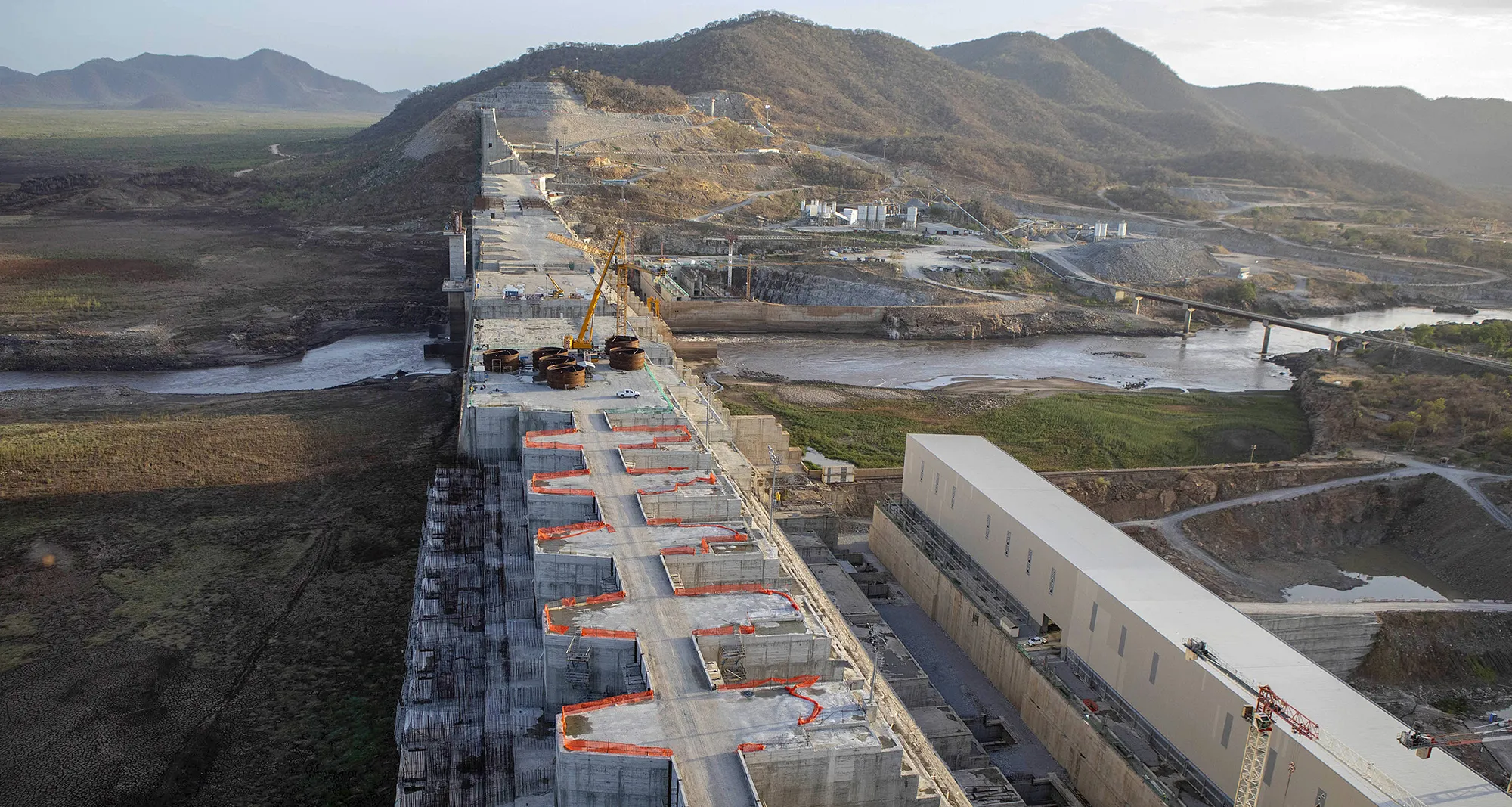Food & Climate
At a time when the Nile Basin region is witnessing many hot events, the hero of which is the Ethiopian Renaissance Dam, starting with unprecedented seismic activity in Addis Ababa, through the exploitation of electricity generated by the dam in Bitcoin mining, to the Somali-Ethiopian rapprochement under Turkish sponsorship, and even Burundi’s withdrawal from the African peacekeeping mission to Mogadishu, Egypt’s position remains frozen and no solution is expected soon.
Egyptian geologist Abbas Sharaki wrote on his Facebook page, saying: “The unprecedented seismic activity continues in Ethiopia, as this morning, Monday, December 30, 2024, 7 earthquakes with a magnitude of 5.1 occurred at a depth of 10 km, 500-600 km from the Renaissance Dam, 100-150 km from the capital, Addis Ababa.
He added that the Director General of the Ethiopian Geological Institute, Igara Tesfaye, announced yesterday that the Renaissance Dam is not at risk of earthquakes, and the Ethiopian News Agency also reported that the Renaissance Dam area has not been exposed to earthquakes during the past fifty years.
He pointed out that the Renaissance Dam area is 500 kilometers away from the African Rift Valley inside Ethiopia, and the seismic activity there is less than the Rift Valley area, but it is not free of historical earthquakes because it has many large faults and cracks that affected the shape of the lake, according to the follow-ups of “Food & Climate” Platform.
The Renaissance Dam was exposed to an earthquake on May 8, 2023 at 2:26 pm Cairo time with a magnitude of 4.4 Richter at a depth of 9.8 kilometers, and it is only 100 kilometers northeast of the Renaissance Dam.
The leakage of water from the Renaissance Dam Lake through the cracks helps the rock masses slide and increases seismic activity.
He said: “The current earthquakes may not be effective now, but they will have a major impact later, especially if their strength increases and they approach the dam, after the storage is completed by 60 billion m3, and the Renaissance Dam itself will create earthquakes due to the weight of the main dam and the saddle (150 million tons), and the weight of the lake is 60 billion tons.

Bitcoin mining thanks to the Renaissance Dam
Ethiopia is leveraging its enormous hydroelectric power, primarily from the Grand Ethiopian Renaissance Dam (GERD) for Bitcoin mining. This has helped the country generate 18% of Ethiopian Electric Power (EEP) income from Bitcoin mining, turning idle energy into a profitable asset. A staggering $1 billion has been spent on mining in the past year, significantly more than earnings from electricity exports.
Ethiopia’s Grand Renaissance Dam is flipping unused power into digital gold, with 18% of Ethiopian Electric Power’s sales now coming from Bitcoin mining. That’s a billion bucks invested in a year, outpacing exports to neighboring countries.
Ethiopia has secured agreements with over 25 mining businesses, allowing the government to generate millions of dollars in just a few months. The agreements have attracted several international miners to the country and helped it generate revenue from its excess electricity.
Ethiopia’s electricity tariffs are among the most competitive globally, a big draw for miners looking for reasonably priced locations for their Bitcoin mining operations. As a result, Ethiopia has established itself as a leader in Bitcoin mining activity, attracting a flood of investments, particularly from Chinese miners following the ban in China.
The country has emerged as a hub for Bitcoin mining, having generated over $55 million in ten months. The remarkable growth and financial return can be attributed to the country’s abundant energy resources. Kal Kassa, Founder and Educator at Bitcoin Birr, stated,
“Ethiopia is becoming a major hub for Bitcoin mining due to our extremely competitive electricity prices. At just 3.2 cents per kilowatt-hour, our electricity is much cheaper than many other parts of the world”, according to “Crypto daily”.
Somalia delegation
A government delegation from Somalia arrived Ethiopian capital Addis Ababa on last Monday to oversee the implementation of the “Ankara Declaration”, an agreement reached between the two countries to resolve a dispute that has lasted nearly a year.
The Somali National News Agency (SONNA) reported that the delegation from the federal government was headed by the Minister of State for Foreign Affairs, Ali Balad.
According to the agency, the visit also aimed to “enhance relations based on mutual respect and fruitful cooperation between Somalia and Ethiopia, as part of efforts to strengthen bilateral partnerships across various fields.”
The visit is further intended to “build good relations with neighbouring countries, based on full respect for each nation’s sovereignty, unity, and territorial integrity.”

Turkish President Recep Tayyip Erdogan announced a “historic agreement” on 11 December between Somalia and Ethiopia during a joint press conference in Ankara with Somali President Hassan Sheikh Mohamud and Ethiopian Prime Minister Abiy Ahmed, according to “MEM“.
Egypt signed a defense pact with Somalia to bolster security cooperation in Augst, that angered Addis Ababa, which was reflected in the media and social media.
While Burundi has officially announced its withdrawal from the African Union Support Mission in Somalia (AUSSOM), marking a significant shift in the region’s peacekeeping efforts.
The decision comes after disagreements over the allocation of troops for the upcoming mission. Burundi had requested an additional 2,000 soldiers, but Somalia allocated only 1,041, a discrepancy that led to Burundi’s decision to withdraw from the new AUSSOM operation set to begin in 2025, according to “Chimp reports”.
Despite all these hot events related to the Renaissance Dam crisis, whether directly or indirectly, the situation of Egypt (the most affected by the Ethiopian dam) has not changed since it announced the freezing of talks with Addis Ababa at the end of last year, and there does not seem to be any solutions on the horizon.

